I’m working on a set of drawings that use some trickery with salt. I flood the surface of a really nice thick smooth piece of paper with watercolor until it almost seems too wet, and then put piles of kosher salt on the wet surface. The salt sucks up color and gives the surface a funky lichen effect. Once completely dry I scrape off the salt and start working on the surface with acrylic ink applied by a dip pen.
I love pen and ink for its sublime line making potential, but it is a risky way to work because even a slight bump or sneeze can ruin a whole piece. Oil paintings are pretty easy to fix: you just scrape up the mistake, add a layer, or paint over it, and your flub is fixed. With acrylic ink you really can’t fix the missteps, but with a steady hand and dose of good fortune you can get a slightly raised, slightly shiny, silky line quality that’s really lovely.
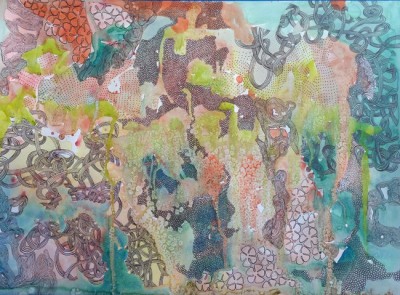
I was born in Pittsburgh just as the manufacturing industry there was crumbling. When I was about 10 we moved to a small town in Western Maryland and I don’t know how well I fit in. It was the kind of place where everyone seemed to be distant cousins. No one went to dangerous places like Baltimore, or Washington, and even though I spent 8 years going to school there I still felt like an outsider when I graduated.
I went back to Pittsburgh for a year in college to attend Chatham College. I spent more time with my grandparents and made great friends and got to know the city again. I loved living there. I transferred to Towson to finish my art degree but I still visit Pittsburgh often to see family and friends, and I sort of always wished I never had moved away from there. My husband and I like to travel and even those short trips North help me remember that DC is not really the center of the universe.
I don’t make art for provocation, or to advocate for feminism, or abused victims, or the powerless, or to express political rage, or to tell my sad stories, or to exorcize demons. For me, art is exploration, itch scratching, mental maintenance and creative noodle exercise. I make things and then they pile up and I occasionally show them to other people to make money to buy more stuff so I can keep up with my art itching. Life is complicated; art really isn’t for me.
 Jennifer Pizzillo is a graduate of Towson University. Her work is concentrated on assembling pleasing color palates and striking pattern in order to produce something visually stimulating. Through the practice of mark making, the effect of mixing textures and media, and the translucence of layering, she aims to create a harmonious patterned aesthetic that incorporates a wide swath of materials, surfaces, and techniques. She lives and works in Montgomery County, Maryland. More information at: https://www.wpadc.org/artist/jennifer-pizzillo
Jennifer Pizzillo is a graduate of Towson University. Her work is concentrated on assembling pleasing color palates and striking pattern in order to produce something visually stimulating. Through the practice of mark making, the effect of mixing textures and media, and the translucence of layering, she aims to create a harmonious patterned aesthetic that incorporates a wide swath of materials, surfaces, and techniques. She lives and works in Montgomery County, Maryland. More information at: https://www.wpadc.org/artist/jennifer-pizzillo
Image at the top of the post is a detail from Salt-aire (2015) by Jennifer Pizzillo.
Jennifer Pizzillo is a featured artist in “Hothouse: imPRINT”, an exhibit that will be open from May 7 – June 20, 2015 at the Capitol Skyline Hotel. This article was produced with the support of the DC Commission on the Arts and Humanities within a partnership between Day Eight and the Washington Project for the Arts.
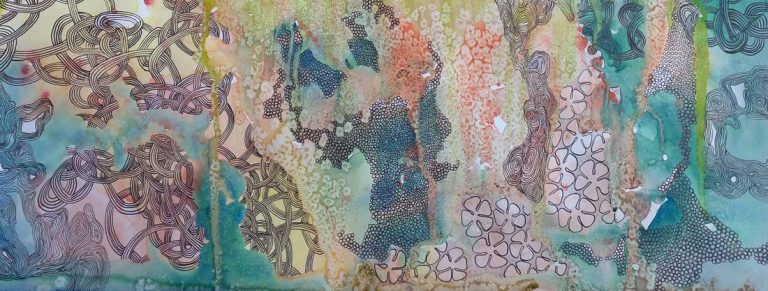
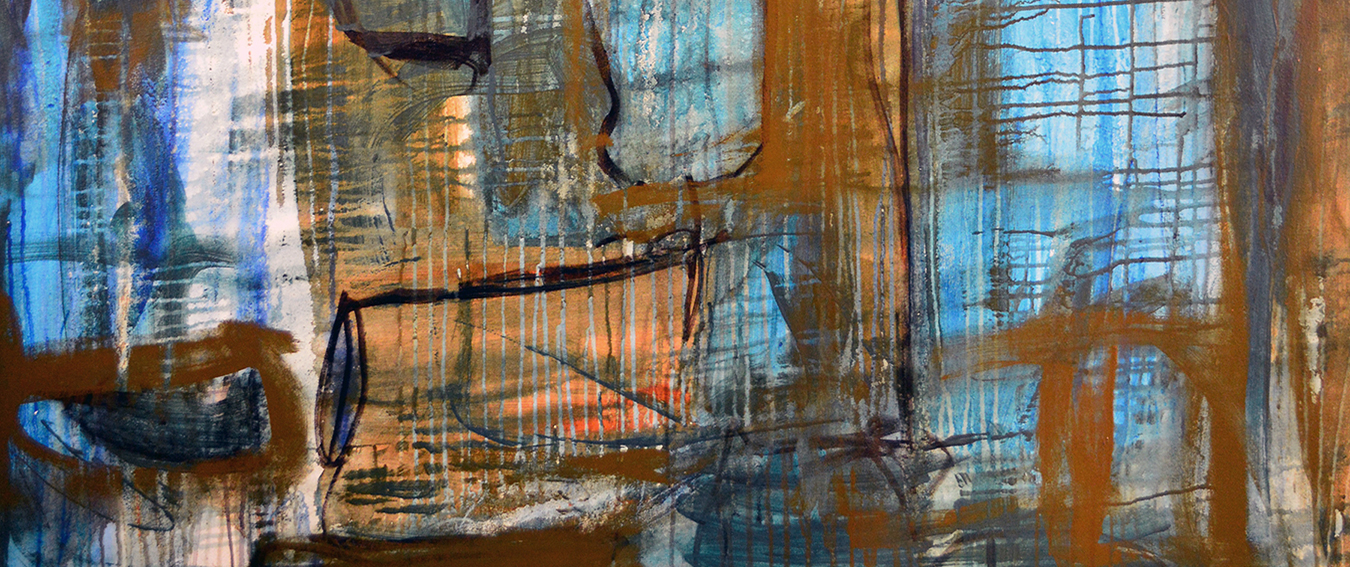
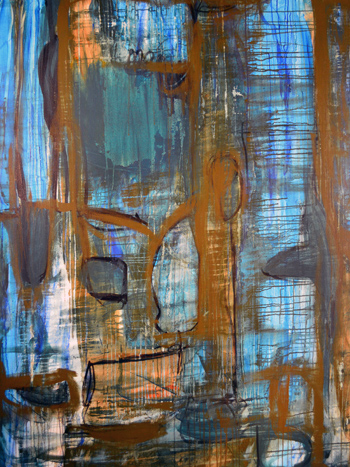
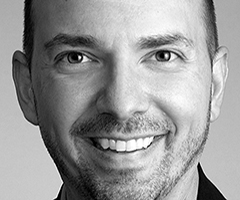 A native of Austin, Texas, Damon Arhos is a visual artist and studio art MFA candidate at Maryland Institute College of Art (MICA) in Baltimore. He has shown artwork in exhibits and galleries across the United States and abroad. Exhibition venues have included Strathmore Hall Foundation (Bethesda, Maryland); Foundry Gallery (Washington, DC); City of Austin People’s Gallery (Austin, Texas); East Austin Studio Tour (E.A.S.T. | Austin, Texas); Plano Art Association (Plano, Texas); and the Barrett Art Center (Poughkeepsie, New York), among others. A frequent collaborator on artistic projects, Arhos has affiliated with DC Arts Studios and Washington Printmakers Gallery in Washington, DC, as well as Art Alliance Austin, the Umlauf Sculpture Garden & Museum, and the Pump Project Art Complex in Austin, Texas. Arhos currently lives and works in the Washington, DC metro area.
A native of Austin, Texas, Damon Arhos is a visual artist and studio art MFA candidate at Maryland Institute College of Art (MICA) in Baltimore. He has shown artwork in exhibits and galleries across the United States and abroad. Exhibition venues have included Strathmore Hall Foundation (Bethesda, Maryland); Foundry Gallery (Washington, DC); City of Austin People’s Gallery (Austin, Texas); East Austin Studio Tour (E.A.S.T. | Austin, Texas); Plano Art Association (Plano, Texas); and the Barrett Art Center (Poughkeepsie, New York), among others. A frequent collaborator on artistic projects, Arhos has affiliated with DC Arts Studios and Washington Printmakers Gallery in Washington, DC, as well as Art Alliance Austin, the Umlauf Sculpture Garden & Museum, and the Pump Project Art Complex in Austin, Texas. Arhos currently lives and works in the Washington, DC metro area. 

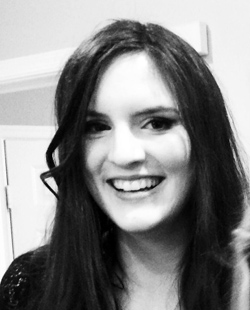 Fallon Chase, originally from Northern Virginia, graduated in May 2014 with a BFA in painting and a minor in literary studies from MICA (Maryland Institute College of Art) in Baltimore, MD. Her work has been shown throughout Baltimore, DC, and VA. She now lives in the DC area, paints, reads, and works at a museum.
Fallon Chase, originally from Northern Virginia, graduated in May 2014 with a BFA in painting and a minor in literary studies from MICA (Maryland Institute College of Art) in Baltimore, MD. Her work has been shown throughout Baltimore, DC, and VA. She now lives in the DC area, paints, reads, and works at a museum.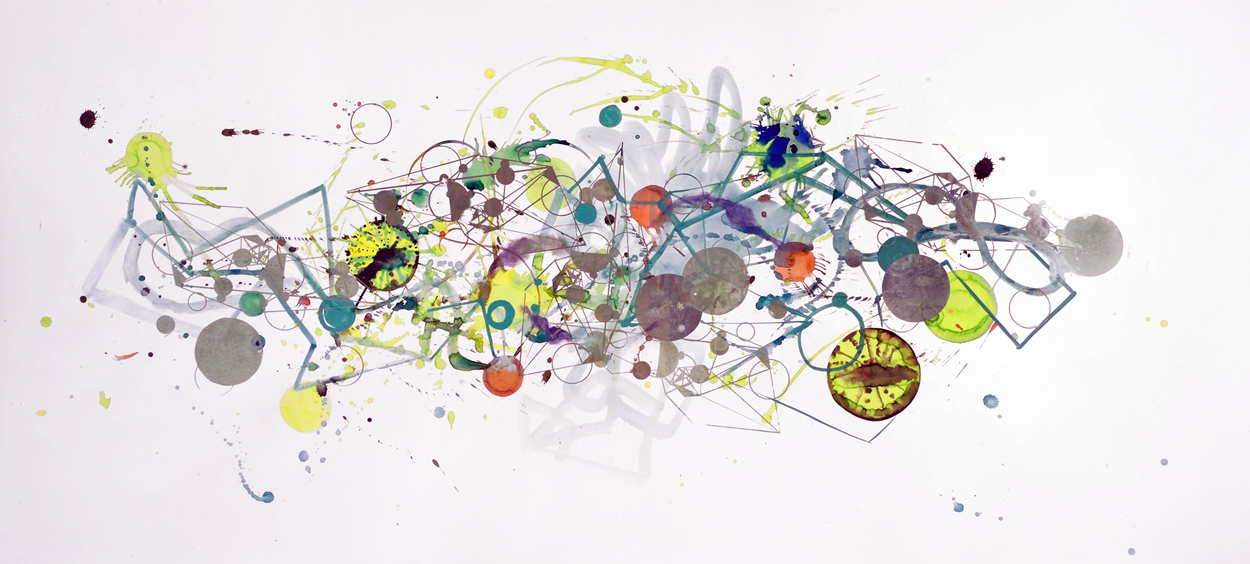

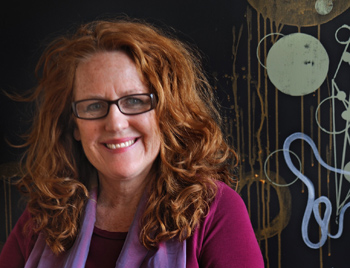 Maryanne Pollock is a graduate of Tyler School of Art in Philadelphia and Rome, Italy. She received her Bachelor of Fine Arts and continued her studies at the Pennsylvania Academy of Fine Arts, the Corcoran College of Art and Design, and through graduate studies in painting at the American University. Pollock is an international, full-time artist and art educator with many years of teaching experience, including The Phillips Collection, DC Public Libraries, and DC Public Schools. She is represented by the Ralls Collection in Washington, DC; Galerie Mourlot and SkotoGallery in NYC, and Genoma Contemporary in Venice, Italy. The artist has lived and worked in her studio in a historic building in Adams Morgan for more than a decade.
Maryanne Pollock is a graduate of Tyler School of Art in Philadelphia and Rome, Italy. She received her Bachelor of Fine Arts and continued her studies at the Pennsylvania Academy of Fine Arts, the Corcoran College of Art and Design, and through graduate studies in painting at the American University. Pollock is an international, full-time artist and art educator with many years of teaching experience, including The Phillips Collection, DC Public Libraries, and DC Public Schools. She is represented by the Ralls Collection in Washington, DC; Galerie Mourlot and SkotoGallery in NYC, and Genoma Contemporary in Venice, Italy. The artist has lived and worked in her studio in a historic building in Adams Morgan for more than a decade. 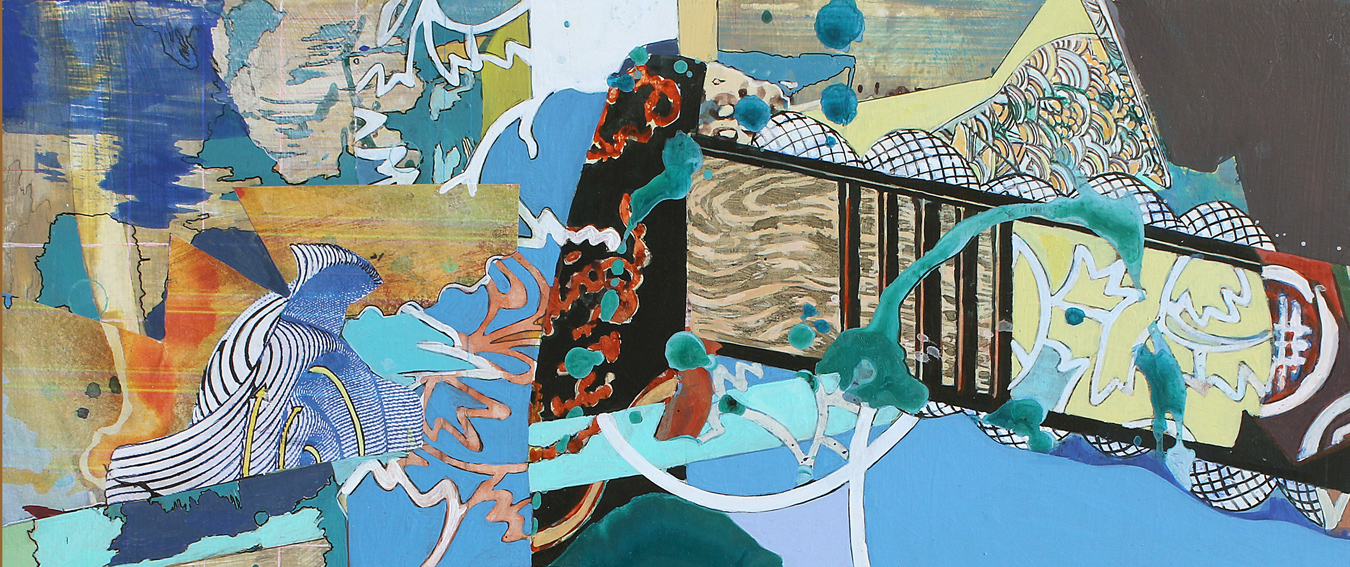
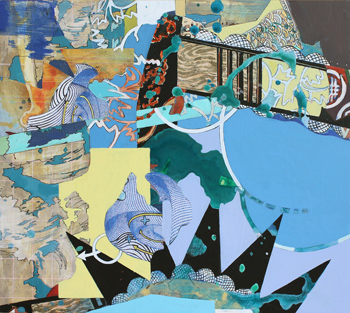

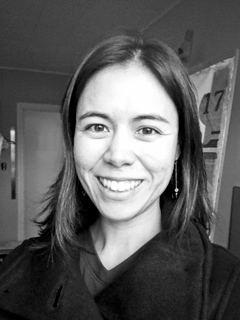 Sylvie van Helden was born in Montreal, Canada in 1974. After graduating with a Biology degree from the University of Michigan Sylvie moved to Baltimore (in 2000) to attend the Mount Royal Program at the Maryland Institute College of Art (MICA). She graduated MICA in 2002 with her MFA, and taught both at the college and high school levels for 12 years. Her works have been shown in local, regional, and national shows at venues such as Maryland Art Place, The Elizabeth Roberts Gallery, Eastern Michigan University, and the Painting Center in NYC. She was the recipient of a Maryland States Arts Council grant for Painting in 2004. Sylvie lives and works in Baltimore, MD.
Sylvie van Helden was born in Montreal, Canada in 1974. After graduating with a Biology degree from the University of Michigan Sylvie moved to Baltimore (in 2000) to attend the Mount Royal Program at the Maryland Institute College of Art (MICA). She graduated MICA in 2002 with her MFA, and taught both at the college and high school levels for 12 years. Her works have been shown in local, regional, and national shows at venues such as Maryland Art Place, The Elizabeth Roberts Gallery, Eastern Michigan University, and the Painting Center in NYC. She was the recipient of a Maryland States Arts Council grant for Painting in 2004. Sylvie lives and works in Baltimore, MD.